Impedance Tube
The impedance tube can be used to measure the absorption coefficient of a material. The structure of the impedance tube compose of a rigid tube with a heavy rigid sample holder at one end to hold the testing sample and a loudspeaker is fixed at the other end as the sound source at individual frequencies. A microphone probe is used to measure the acoustic level in the tube along the axis. The lower frequency should be at least three quarters of the wavelength inside the tube, and the upper frequency is limited by the diameter of tube and is equal to 1.84c/πd.
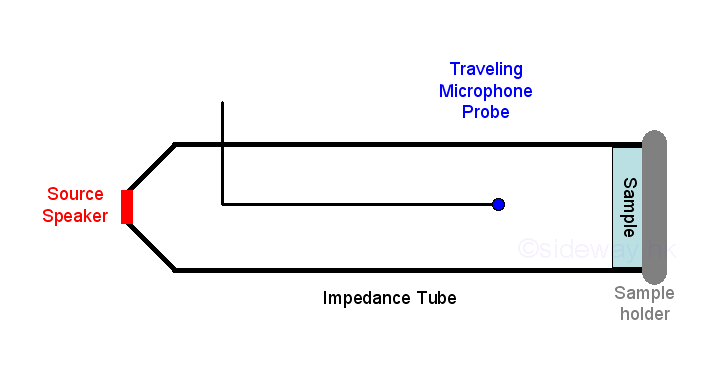
The impedances of the mediums are:

The specific acoustic impedance ratio of the sample is:

Amplitude of Total Pressure
The amplitude of the total pressure is
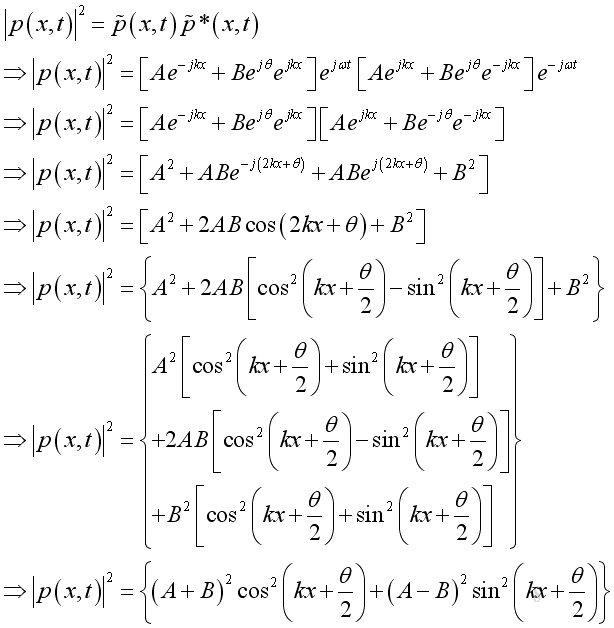
The maximum amplitude of the total pressure is :

The minimum amplitude of the total pressure is :

Sound Power Absorption Coefficient
The sound power reflection coefficient is:

Let the ratio of measured maximum amplitude over minimum amplitude be S, imply

Therefore pressure reflection coefficient is
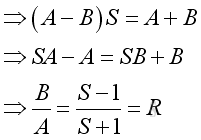
And the sound power absorption coefficient is
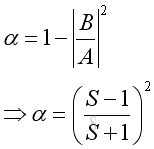
Impedance of Absorption Material
From the amplitude of the total pressure, the requirment for first maximum closest to the termination is :
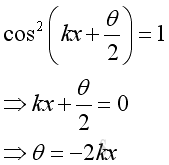
x is on the left of the boundary, therefore

If the first extreme is a minimum:
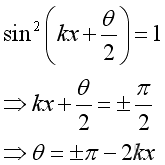
Substitute into the specific acoustic impedance ratio of the sample and get
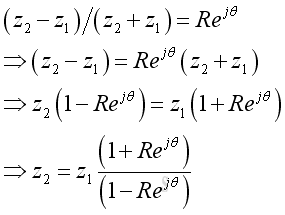
Two microphone method
The pressure signals is measured by two microphones in fixed positions with a distances away from the sample surface. A transfer function can relate the measurements of two microphones and determines the relative magnitude and phase of the reflection coefficient as a function of frequency. And the impedance can then be found from the reflection coefficient.
©sideway
ID: 101000018 Last Updated: 10/18/2010 Revision: 0 Ref:
References
- Michael P. Norton; Denis G. Karczub,, 2003, Fundamentals of Noise and Vibration Analysis for Engieer
- G. Porges, 1977, Applied Acoustics
- Douglas D. Reynolds, 1981, Engineering Principles of Acoustics:; Noise and Vibration Control
- Conrad J. Hemond, 1983, Engineering Acoustics & Noise Control
- F. Fahy, 2001, Foundations of Engineering Acoustics
- D.A. Biew; C.H. Hansen, 1996, Engineering Noise Control: Theory and Practice
Latest Updated Links
- Legrand Galion(last updated On 12/2/2025)
- Schneider Electric AvatarOn(last updated On 12/1/2025)
- Alfalux(last updated On 11/30/2025)
- Novabell(last updated On 11/29/2025)
- TownGas NJW12RM1(last updated On 11/28/2025)
- SamSung 42" OLED TV S90F 4K(last updated On 11/27/2025)
- Tefal KI7208 GLASS VISION KETTLE(last updated On 11/26/2025)
- Tefal BL83SD PerfectMix Cook Blender(last updated On 11/25/2025)
- Tefal KI7208 GLASS VISION KETTLE(last updated On 11/24/2025)
- Hitachi RD-290GX Dehumidifier(last updated On 11/23/2025)
- Hitachi RD-290GX Dehumidifier(last updated On 11/22/2025)

 Nu Html Checker
Nu Html Checker  53
53  na
na  na
na
Home 5
Business
Management
HBR 3
Information
Recreation
Hobbies 9
Culture
Chinese 1097
English 339
Travel 18
Reference 79
Hardware 54
Computer
Hardware 259
Software
Application 213
Digitization 37
Latex 52
Manim 205
KB 1
Numeric 19
Programming
Web 289
Unicode 504
HTML 66
CSS 65
SVG 46
ASP.NET 270
OS 431
DeskTop 7
Python 72
Knowledge
Mathematics
Formulas 8
Set 1
Logic 1
Algebra 84
Number Theory 206
Trigonometry 31
Geometry 34
Calculus 67
Engineering
Tables 8
Mechanical
Rigid Bodies
Statics 92
Dynamics 37
Fluid 5
Control
Acoustics 19
Natural Sciences
Matter 1
Electric 27
Biology 1
